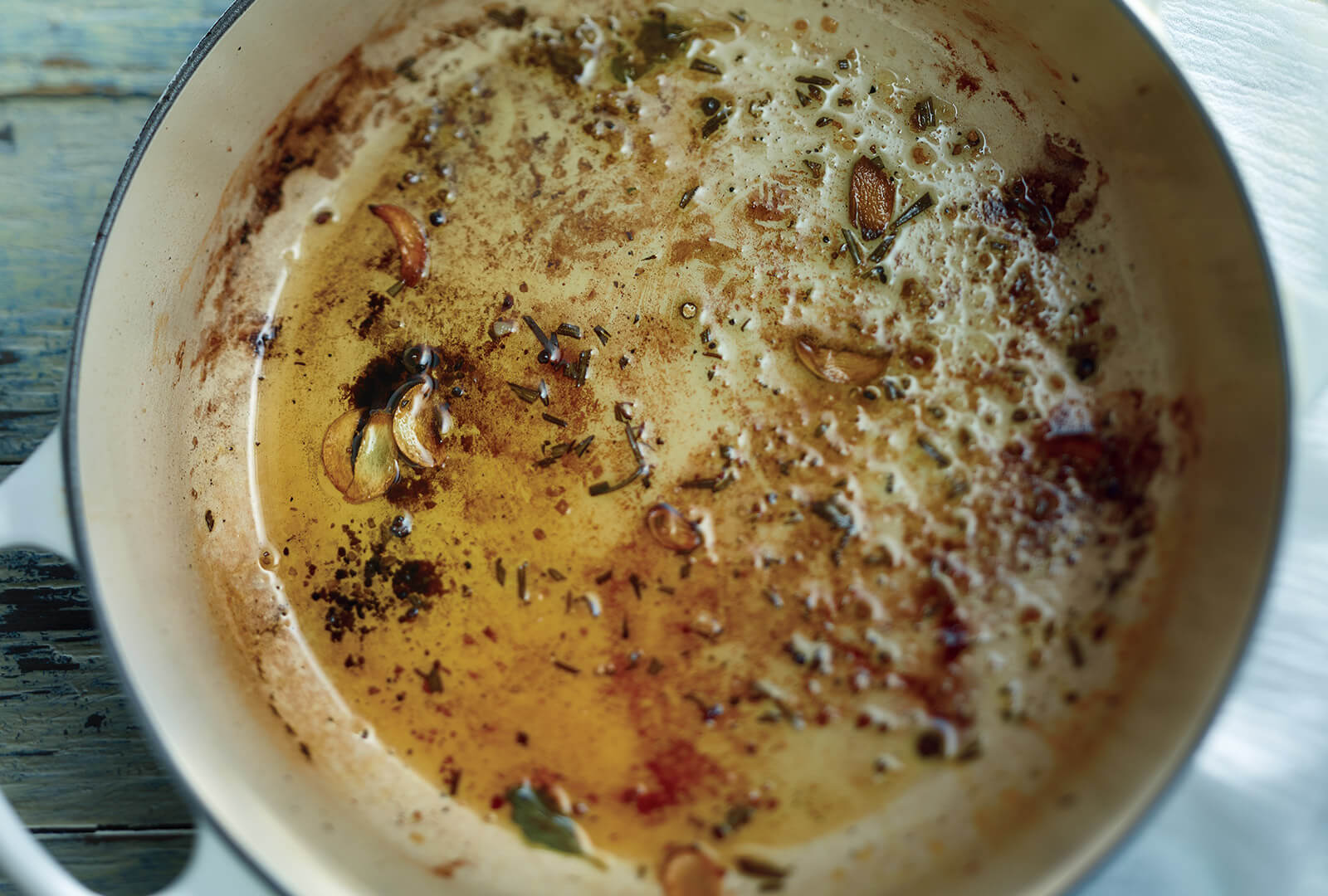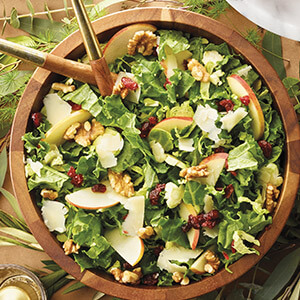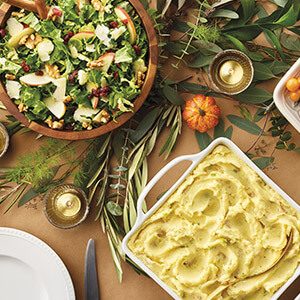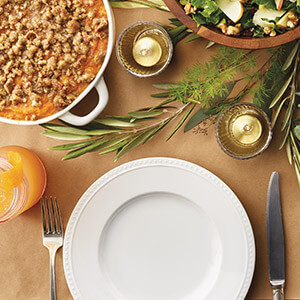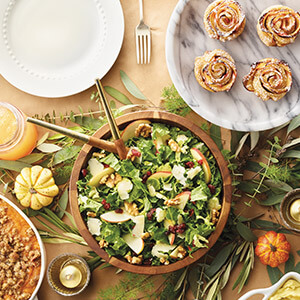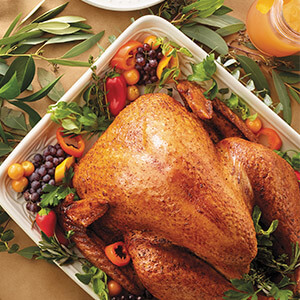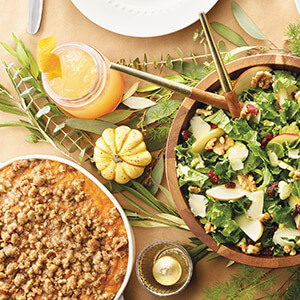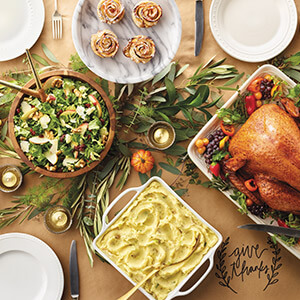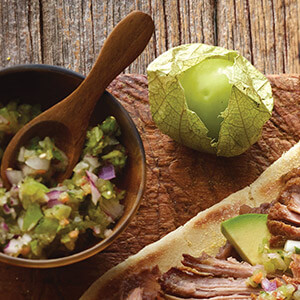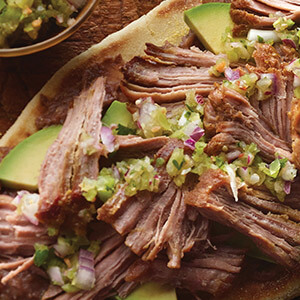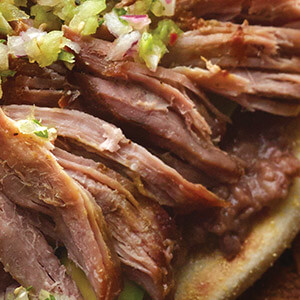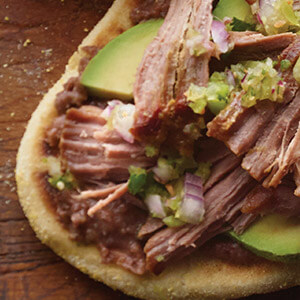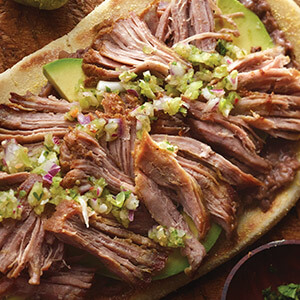In the kitchen in a bungalow in the East Bay, near North Berkeley’s “gourmet ghetto,” two food stylists are preparing a dish for a photo shoot for a national publication. Sarah Menanix places a round of cilantro butter to melt on a piece of broiled salmon, while Alanna Taylor-Tobin slices fresh limes to arrange with the fish on a ceramic plate. They place the plate on a piece of marble, sun filtering through the windows, and carefully set a tumbler of white wine next to it, along with a crumpled linen napkin. The look is casual, effortlessly beautiful.
This photo, along with photos for other recipes they are shooting today, tells a story. “You’ve gone to the market, you’ve found beautiful ingredients, you cooked them simply, and you’re ready to share a meal,” said Taylor-Tobin, who studied art history as well as going to chef school. “Everything is fresh and informal, with natural surfaces, fabrics, and beautiful produce and meats.” The look, she said, is about hearty at-home eating, not what you might find in a high-end restaurant where, she said, “people use tweezers to make your meal just so.”

Food photography and food styling by Studio H
Of course, a good deal of work goes into making the photos look so effortless. But the effect is that home cooks don’t feel intimidated by a perfect image of an impossible-to-create recipe. Taylor-Tobin wants the photos to welcome the viewer into a world that reflects the main influence in American food right now – the simple farm-to-table cuisine made famous by Chef Alice Waters of Chez Panisse and now everywhere in California and the country.
Over the last decade, there has been a sea of change in the beauty we see in food. If you looked back a few decades at the covers of Gourmet magazine, you’d likely see lush and glossy images of complicated meals that took stylists hours to construct. Where once the image of a cake would have been replete with decorations in artificial colors and fancy rosettes, now the style is for cakes to look barely frosted and unfinished, like no one went to any fuss.
Beginning in 1964, Life magazine wondered “why so many young artists … seem to have hit on food as the ideal subject matter.” Pop artists were fascinated with supermarkets and branded products, most famously in Andy Warhol’s Campbell’s soup cans. The Campbell’s soup can was first depicted much earlier, in 1926, in “Still Life with Telephone,” by Luigi Lucioni. The still life had the traditional fruit and wine from the artist’s Italian past alongside the modern conveniences of the telephone and the Campbell’s soup can, which represented industrialization, innovation in preserving and canning, and the commercialization of food.
The later pop artists were fascinated with brands as the mass-produced images that entered our homes, repeating images over and over, shaping our visual world. Roy Lichtenstein did away with the labels in paintings such as “His Standing Rib,” which depicted a large rib roast in the dotted texture of advertising graphics, commenting on the growing distance between Americans and their food, and food as an abstract image. In 1962, Claes Oldenburg made colossal burgers to point out the increased prevalence of fast food in our daily lives as McDonald’s took off as a brand.
Food in art and photography today focuses, once again, on the natural beauty of the produce, meats and baked goods. The look, as in the photos styled by Menanix and Taylor-Tobin, is of natural beauty, ease and a revival of the home-cooked meal. It is a celebration not of fine art but more of pride in Craftsmanship.
Tips for Setting the Table
-
![]()
#1
Start with fresh, colorful produce that is in season. It’s the prettiest.
-
![]()
#2
Use natural table coverings. “I like natural colors because they let the food be the star,” said Taylor-Tobin.
-
![]()
#3
Don’t worry about fancy place settings with salad and dessert forks. Keep it simple.
-
![]()
#4
Don’t use patterned or flowered plates, except as an accent on the table. Let the beauty of the food speak for itself without a complicated background.
-
![]()
#5
Add appealing color to the plate with bright fruits and vegetables, showing off their natural beauty by placing slices on the plate
-
![]()
#6
“A sprig of parsley on the plate is a cliché,” according to Taylor-Tobin, “But fresh herbs on a dish always make it look special.” She recommended tearing basil or mint, or adding touches of rosemary or – yes – parsley to add a lovely touch to the plate.
-
![]()
#7
Most important to enjoying an attractive meal is to not eat standing up or in front of the fridge. Take the time to make even a simple meal pretty. Consider a beautiful meal a gift to your guests and yourself.
